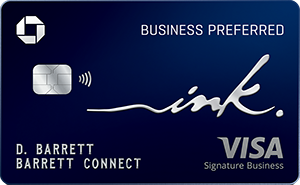5 Tax Strategies for Your Holiday Sales
For many small businesses, the holiday shopping season can represent 20%, 30%, or more of total annual sales. With the season for holiday shopping well underway, be sure to address some key tax issues. Using tax planning strategies now will make sure that you maximize your profits and minimize any problems with the government.
1. Onboard your extra staff
If you need additional help to best serve your customers during the holiday season, make sure you treat seasonal workers correctly. Even though they’ll work for you for a short time, they are likely employees and not independent contractors. Whether they are full-time or part-time, these seasonal employees must complete the same forms you use for long-term, full-time employees. These forms include:
- Form I-9, to verify they are eligible to work in the U.S.
- Form W-4, to know how much federal (and state, where appropriate) income tax to withhold.
- Form 8850, to submit to your state workforce agency so you know whether you’re eligible for a work opportunity tax credit (in case you’ve hired someone who’s been unemployed for at least 26 weeks).
2. Understand how to treat income from gift card sales
Many businesses -- restaurants, retailers, and service providers (e.g., hair and nail salons) -- sell a considerable number of gift cards or gift certificates during the holiday season. Individuals receiving these items as gifts typically redeem them in the new year.
Usually, you report the income from the sale of the gift card at the time of the sale, but be sure to carefully track sales from gift card redemptions so you don’t report income twice.
Larger businesses that use the accrual method of accounting and have an Applicable Financial Statement (meaning an audited financial statement) have the option to defer income from the sale of gift cards for one year.
What happens if you sell gift cards that are never redeemed? Your state may require you to treat this as unclaimed property that escheats to the state (meaning the property is turned over to the state). If so, this may cost you revenue and produce a tax loss. Check with your state on its rules for abandoned and unclaimed property.
Why a Business Credit Card Could Transform Your Small Business
These business credit cards that offer a convenient and efficient way to separate personal and business expenses, simplifying accounting and tax reporting.
Additionally, business cards can provide valuable perks such as rewards points, cashback, and expense tracking tools, enhancing financial management and the potential to help save money in the long run.
| Offer | Our Rating | Welcome Offer | Rewards Program | APR |
|---|---|---|---|---|

Ink Business Unlimited® Credit Card
Apply Now for Ink Business Unlimited® Credit Card
On Chase's Secure Website. |
Rating image, 4.50 out of 5 stars.
4.50/5
Our ratings are based on a 5 star scale.
5 stars equals Best.
4 stars equals Excellent.
3 stars equals Good.
2 stars equals Fair.
1 star equals Poor.
We want your money to work harder for you. Which is why our ratings are biased toward offers that deliver versatility while cutting out-of-pocket costs.
|
Earn $750 bonus cash back Earn $750 bonus cash back after you spend $6,000 on purchases in the first 3 months from account opening. | Earn unlimited 1.5% cash back on every purchase Earn unlimited 1.5% cash back on every purchase made for your business |
Intro: 0% Intro APR on Purchases Purchases: 0% Intro APR on Purchases, 12 months Balance Transfers: N/A Regular: 18.49% - 24.49% Variable |

Ink Business Preferred® Credit Card
Apply Now for Ink Business Preferred® Credit Card
On Chase's Secure Website. |
Rating image, 4.50 out of 5 stars.
4.50/5
Our ratings are based on a 5 star scale.
5 stars equals Best.
4 stars equals Excellent.
3 stars equals Good.
2 stars equals Fair.
1 star equals Poor.
We want your money to work harder for you. Which is why our ratings are biased toward offers that deliver versatility while cutting out-of-pocket costs.
|
Earn 120,000 bonus points Earn 120,000 bonus points after you spend $8,000 on purchases in the first 3 months from account opening. | Earn 3 points per $1 in select business categories Earn 3 points per $1 on the first $150,000 spent in combined purchases on travel, shipping purchases, Internet, cable and phone services, advertising purchases made with social media sites and search engines each account anniversary year. Earn 1 point per $1 on all other purchases-with no limit to the amount you can earn. |
Intro: N/A Purchases: N/A Balance Transfers: N/A Regular: 21.24%-26.24% Variable |
3. Check your sales tax procedures
As a merchant, you’re familiar with the sales tax rules in your location. But if you sell to customers in another state, you may be required to collect sales tax and remit it on those remote transactions. There are more than 11,000 sales tax jurisdictions in the U.S., although there are five states with no sales tax.
Find out whether there are any sales tax obligations where your customers are located and whether you qualify for a “small seller” exception to exempt you from such obligations. Find out more about sales tax on remote transactions from Avalara.
4. Decide what you’ll do with unsold inventory
If you’re a savvy business owner, you’re skilled in knowing how much inventory to have on hand to meet customer demand during the holiday season. But no matter how expert you are at this, you can never be sure about what will happen. As the clock winds down to the holiday season, you may resort to sales as a way to move your inventory.
Once the holiday season has ended, decide how to dispose of any unsold inventory if you can’t sell it at normal sale prices to customers. The method you choose dictates the tax consequences. You can:
- Liquidate it: If you sell items to a remainder (a company that buys unsold inventory), report the income as you would for any other sale. Yes, you’ll get less than if you could have sold it to customers, but something may be better than nothing.
- Donate it: If you give merchandise to an IRS-approved, tax-exempt organization, you can deduct the smaller of its fair market value on the date of the charitable contribution or its basis (what’s included in your opening inventory). But you must remove the amount of the charitable contribution deduction from your opening inventory since it isn’t part of the cost of goods sold. If the cost of the item wasn’t in your opening inventory (e.g., you treated it as non-incidental materials and supplies that you already deducted), the basis is zero, and no charitable contribution deduction is allowed. Find more information about deducting charitable contributions (including special rules for donations of food inventory) in IRS Publication 526.
- Take a write-down: If the items are unsalable at normal prices or unusable in the normal way because of damage, imperfections, shop wear, changes of style, odd or broken lots, or other similar causes, you may take a write-down affecting the cost of goods sold. This means adjusting the price you carry on your books (assuming you otherwise use the lower of cost or market value for your inventory). But you need to establish the new price by offering the items for sale at the reduced price for a period ending not later than 30 days after the inventory date (the date last counted).
5. Adjust your final installment of estimated taxes
Did the holiday season live up to your expectations? Were sales disappointing? Your holiday activities may impact what you pay in the final installment of estimated taxes due:
- Dec. 31, 2020, for calendar year C corporations
- Jan. 15, 2021, for owners of pass-through entities (partnerships, S corporations)
Make sure the estimated taxes are sufficient to avoid underpayment penalties. But don’t overpay, which amounts to an interest-free loan to the government that you won’t recoup until you file your return. Learn more about estimated taxes in IRS Publication 505.
A final thought
Don’t let the holiday season pass you by. Talk with your CPA or other tax advisor to make sure you’re handling your small business taxes correctly and optimizing your tax picture for the year.
Alert: our top-rated cash back card now has 0% intro APR until 2025
This credit card is not just good – it’s so exceptional that our experts use it personally. It features a lengthy 0% intro APR period, a cash back rate of up to 5%, and all somehow for no annual fee! Click here to read our full review for free and apply in just 2 minutes.
Our Research Expert
We're firm believers in the Golden Rule, which is why editorial opinions are ours alone and have not been previously reviewed, approved, or endorsed by included advertisers. The Ascent, a Motley Fool service, does not cover all offers on the market. The Ascent has a dedicated team of editors and analysts focused on personal finance, and they follow the same set of publishing standards and editorial integrity while maintaining professional separation from the analysts and editors on other Motley Fool brands.
Related Articles
View All Articles